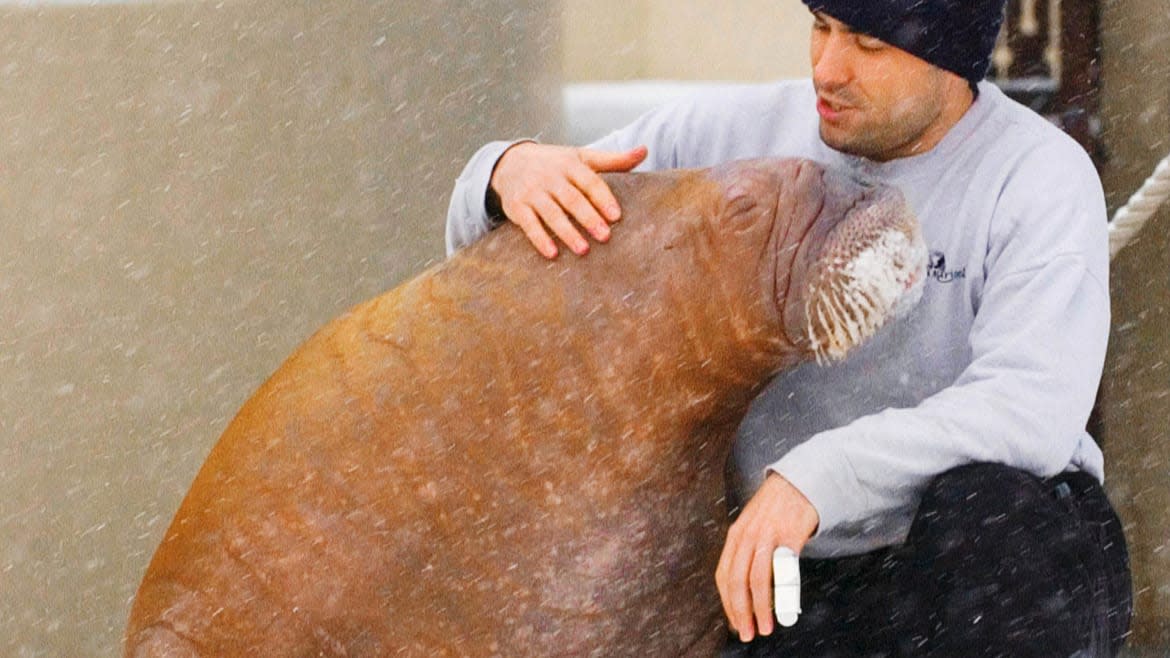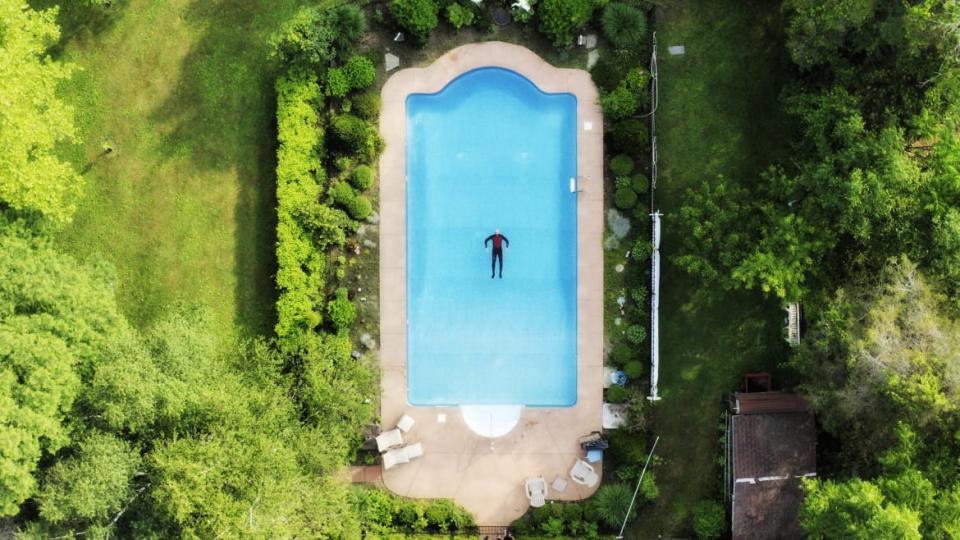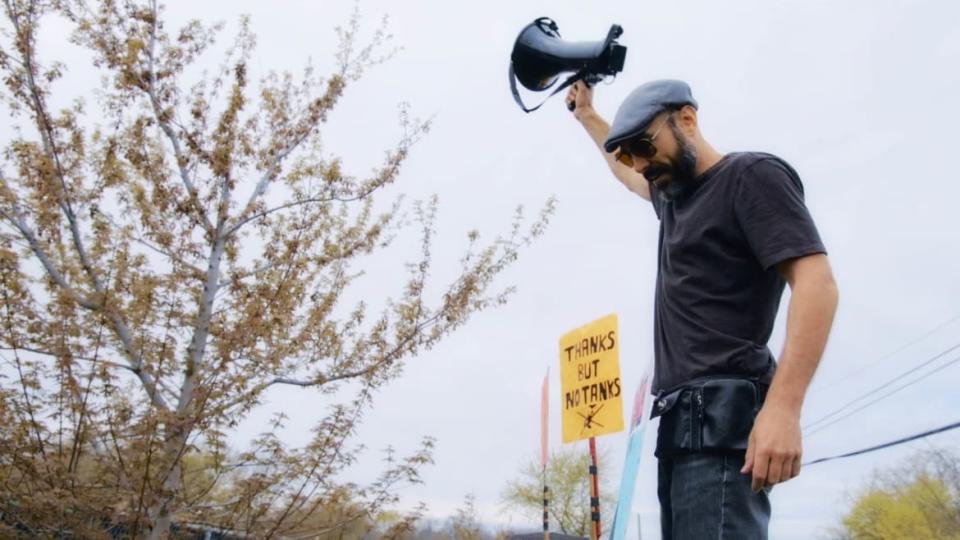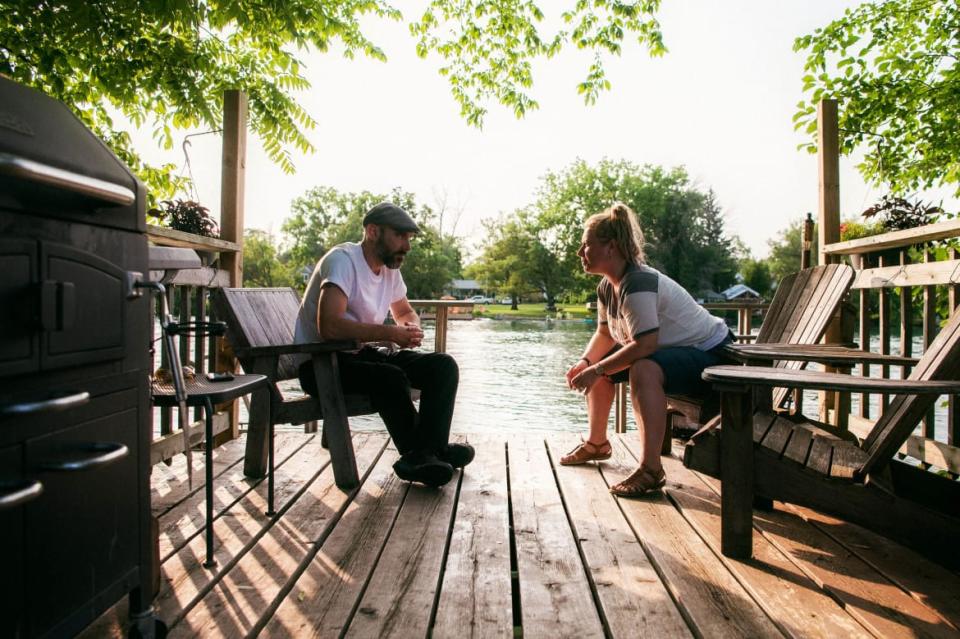The Fight to Free Smooshi, the World’s Most Famous Captive Walrus

In happier times, Phil Demers and Smooshi the walrus snuggled in the summer sun or frolicked together down a snow-covered slide. The 800-pound flippered orphan would bark and lumber into the room when Demers sing-songed her name. Smooshi took a shine to Demers, who believes she viewed him as her mother.
But this interspecies love story ground to a halt in 2012, when Demers left his 12-year post at Marineland, the Canadian amusement park that keeps whales, dolphins, sea lions—and now apparently one remaining walrus, Smooshi—for aquatic performances. Demers says he quit in protest of the Niagara Falls attraction’s treatment of animals.
The 42-year-old former animal trainer has been at war with the tourist empire ever since. Marineland filed a $1.5-million lawsuit accusing him of a plot to kidnap Smooshi, a case that resulted in Demers countersuing the park’s rock-ribbed Slovenian proprietor, the late John Holer.
That legal battle continues, and is just one part of Demers’ story told in the new documentary The Walrus and the Whistleblower.
The World’s Most Famous Walrus Is Being Abused, Trainers Say
“I don’t want money. I want the fucking walrus,” Demers says in the film, which premieres in Canada on May 28, on CBC, CBC Gem and on the documentary Channel. The documentary was an official selection of Hot Docs Canadian International Documentary Festival and is currently seeking a home for U.S. and worldwide distribution.
In 2016, Demers spoke to The Daily Beast about his quest, which has left him with a six-figure legal tab against a Niagara goliath. “It’s asshole versus asshole, to be fair,” Demers told us back then. “I’m just as stubborn as the owner is, but he’s got endless amounts of money and I don’t. I have a big mouth and a refusal to shut up.”
“I’d like to think it’s good versus evil,” he added, “but I know it’s asshole versus asshole.”

The outspoken, weed-smoking Canadian anti-hero is now a mailman, but he’s never surrendered his dream of reuniting with his beloved Smooshi. And of seeing her released from what he considers the cruel, inadequate confinement of Marineland’s walls.
Demers’ chief adversary, who died in 2018 at age 83, was Marineland owner John Holer, who sued a dozen ex-employees and journalists over the years. This, according to the film, was in a bid to silence bad press about Marineland’s facilities. The only lawsuit left standing is the one leveled against Demers, even after Holer’s death.
The ghost of Holer—or at least his supposed wishes, which are being carried out by his widow and company lawyers—continues to plague Demers.
In the film, we see Demers—shirtless, barefooted and strolling down the street. We see him cramped and naked in a small bathtub, the water draining, or floating in a large swimming pool. The metaphors won’t be lost on audiences.
Writer-director-producer Nathalie Bibeau says Demers, a childhood acquaintance, makes bigger life decisions and writes speeches in the bath. (For some viewers, like this reporter, the footage may call to mind SeaWorld’s mammoth orcas swimming in skimpy tanks.)

“Ultimately, while this is a story about animals and our relationship with animals, it’s also the story of a whistleblower who has been hanging onto this and fighting for it for over eight years, who is trapped in his own story,” Bibeau told The Daily Beast.
“He’s a guy who feels as if he’s trying to break free,” Bibeau said.
At the outset of the film, Demers says, “Whistleblower? I blew whistles for years at Marineland but it was to tell the dolphins to come back to the stage and get their fish.” Initially he figured the animal-rights protesters he encountered simply didn’t understand his special bond with Smooshi and the other walruses, which included Zeus, Buttercup, Apollo and Sonja. (All but Smooshi have died in the past few years, and Demers told The Daily Beast this week her whereabouts aren’t known to him.)
Demers would join the ranks of anti-captivity activists years later. “There’s a walrus back there. Her name is Smooshi… and I gotta get her out of there,” he declares at one demonstration outside the 1,000-acre sea and land mammal menagerie.
Bibeau, who visited Marineland as a child, said she wanted to capture the gray areas inside the conflict between the hard-headed Demers and Holer. Demers lives on one side of the Niagara River and his former boss, once considered a “fatherly” figure to the ex-trainer, lived on the other. Banished from Marineland, Demers can see its tower from his home and is often forced to drive past its grounds.
“There’s something Shakespearean about that to me,” Bibeau told The Daily Beast. “A sense of betrayal. John Holer must have felt betrayed by Phil, and Phil felt betrayed by Marineland. When he came forward, they called him a liar.”
Holer, a vintner and circus trainer who immigrated to Ontario, opened Marineland in 1961. The park, which became an economic boon for the area, made Holer a king in Niagara, and he aspired to a Disney-like cachet.
He hired Demers in 2000, and Smooshi came along four years later. Named so for “smooshing” her face affectionately into Demers, the walrus and her caretaker became media sensations, even earning a nod on Jimmy Kimmel Live!
The documentary reveals Holer’s struggle against the turning tide of public opinion over cetaceans in captivity. The protests at Marineland began to swell even before the groundbreaking 2013 documentary Blackfish, which depicted the troubling treatment of orcas living inside SeaWorld amusement parks in America.

One video clip, posted on the internet, showed Holer intimidating an activist handing out leaflets at Marineland’s gates. “I’m lucky you don’t have a knife? So you would stab me if you had a knife?” the protester asks Holer, who hovers nearby and answers ominously, “That’s right. I’d bury you right here.”
The Walrus and the Whistleblower incorporates horror stories not dissimilar to those told in Blackfish, though it’s not the main focus of the character-driven feature. One former Marineland trainer even suggests in the film the Canadian park was worse than SeaWorld—likening it to the “Wild Wild West” when it came to animal protocols.
Demers, once the self-styled Kanye West of animal trainers, has become amongst the park’s most vocal defectors and has amassed nearly 27,000 Twitter followers.
In the documentary, he speaks about baby walruses delivered to Marineland under cover of darkness, unannounced to staff before their arrival. (Some of them, he says in the film, were captured in Russia by operators who storm beaches, induce panic and corral the calves, sometimes slaughtering their mothers.)
According to Demers, employees were tasked with drugging anxious animals with valium and even slipping human antidepressants inside their food. He claims that when the walruses and other animals weren’t performing, they were left to languish in their cages, made up of 6- to 7-foot platforms and a shallow pool.
“There comes a point where you used to make sense of things,” he says in the film. “You can’t no more. The excuses are gone.”

In the fall of 2011, the water disinfection systems broke down, and Holer allegedly ordered the use of more chlorine in the pools. The higher levels of chlorine led to chemical burns for many of the animals, including Smooshi, who suffered an inflamed flipper. Some seals were left isolated in dry environments, damaging their skin. (These accusations, explored in the film, were also detailed in a 2012 Toronto Star exposé.)
Demers says he quit because Holer refused to dump the chlorine water.
Andrew Burns, a lawyer for Marineland, has said the park was investigated by Canadian agencies that found no evidence of animal abuse.
Marineland could not be reached for comment about the documentary and the allegations from Demers and other former employees.
Bibeau says Marineland declined to take part in her film.
This fall, Demers’ tussle with Marineland will also be part of an episode on marine mammal captivity on CBC’s The Nature of Things. Bibeau told The Daily Beast she welcomes Marineland’s participation in the segment.
While entangled in Marineland litigation in the last two years, Demers also fought for a bill to ban whale and dolphin captivity in Canada. Last year, that bill was passed.
In an interview with The Daily Beast, Demers said he has no intention of giving up the cause for Smooshi eight years in. “We’re in war,” he said earlier this week. “It runs to the deepest core.”
“There’s no question John Holer is dead, but he’s still operating alive and well here,” added the activist, who has not yet seen the film.
The rivalry between Holer and Demers, however, isn’t so black and white in the film. Demers sheds tears when Holer dies, unable to believe his nemesis is gone, and sympathizes with the man’s mourning family. He says he wishes he could sit down with Holer’s widow, to work out their legal differences.
As stubborn as his now-deceased opponent, Demers refuses to settle. “They know what the fuck I want,” he tells his lawyer at one point in the movie. “Just move the fucking walrus to another facility and this ends altogether.”
Bibeau, who is not an animal rights activist herself, said that as a storyteller, she’s motivated to get behind the battle lines. “When you look, there’s more things that bring us together than tear us apart,” Bibeau said. “I want to soften the edges of the polarization. I hope people come out of this with a certain feeling of seeing the gray and questioning their own positions.”
That reckoning, she hopes, will include contemplating their relationship to animals and their relationship with conflict, or “the hills we’re willing to die on.”
The crusade for Smooshi is unquestionably Demers’ hill.
He said he didn’t ask for the protracted feud, one that he claims has destroyed him financially. But he refuses to let the company silence him or keep his walrus forever. “They never would have imagined a bum like me would have them against the wall,” he told us. “I’m unapologetic in getting my justice from Marineland.”
Smooshi is estimated to be 17 years old now, and Demers believes she’s still alive because she knows her surrogate “mom” is out there. “She’s always looking for me,” he said.
“It’s not just a walrus,” Demers said of their peculiar connection. “She thinks I’m her mom. I lived with that animal for years. I’m in a hostage situation where they’re holding onto a member of my family.”
Got a tip? Send it to The Daily Beast here
Get our top stories in your inbox every day. Sign up now!
Daily Beast Membership: Beast Inside goes deeper on the stories that matter to you. Learn more.

